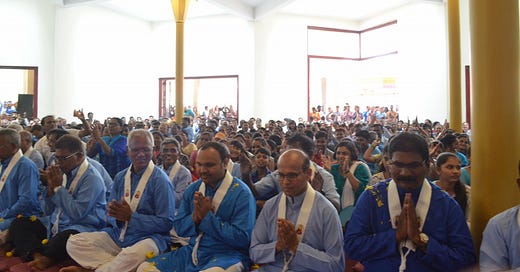The Saddhamma Sutra (Samyutta Nikaya 16.13) offers profound insights into the nature of the Dhamma, particularly in relation to the adaptation of Buddhist teachings as the Sangha evolves over time. Even during the Buddha's lifetime, there were instances of adjustments made to the Dhamma, some of which led to unskillful behavior. These adaptations continue to this day, often driven by a desire to accommodate the teachings to fit the shifting views of modern times. In doing so, the original essence of the Buddha's message has, at times, been obscured.
One of the most enduring misconceptions is the belief that the Buddha’s teachings must be altered to accommodate ever-changing views. This, as we shall explore, stems from a misapplication of a key teaching of the Buddha, which has been taken out of context to justify extensive modifications to the core of the Dhamma. What has resulted is a wide range of contradictory "Buddhist" traditions, each claiming authenticity, yet often presenting a confusing "Dharma" that diverges from the original teachings. The Buddha’s teaching, in essence, was meant to be simple and clear: "I teach the origination of dukkha and the cessation of dukkha, nothing more" (Majjhima Nikaya 22.37+).
Today, we witness the far-reaching belief that the Buddha’s teachings should bend to accommodate ever-changing cultural and philosophical trends. However, as we will see from the Saddhamma Sutta, such alterations do not reflect the Buddha's intended message.
The Saddhamma Sutra
The Saddhamma Sutta is a conversation between the Buddha and the senior monk Maha Kassapa, in which Kassapa asks the Buddha why, despite the increasing number of training rules, fewer monks seem to develop full understanding. The Buddha responds with an important revelation about the degeneration of the Dhamma over time and the rise of counterfeit Dhammas that obscure the true teachings.
The Buddha explains that when the true Dhamma begins to disappear, it is often because of the presence of counterfeit Dhammas, which confuse and mislead practitioners. He likens this to counterfeit gold, which diminishes the value of true gold. Similarly, when counterfeit Dhammas arise, they obscure the true Dhamma and lead to a gradual erosion of understanding, much like a boat slowly sinking. The Buddha warns that the true Dhamma does not naturally disappear; rather, it is foolish people within the Sangha who cause its disappearance.
To clarify this process, the Buddha identifies five unskillful qualities that contribute to the confusion and degeneration of the Dhamma:
Disrespect for true teachers.
Disrespect for the Dhamma.
Disrespect for the Sangha.
Disrespect for the Eightfold Path.
Disrespect for deepening concentration.
Keep reading with a 7-day free trial
Subscribe to The Gentle Law to keep reading this post and get 7 days of free access to the full post archives.





